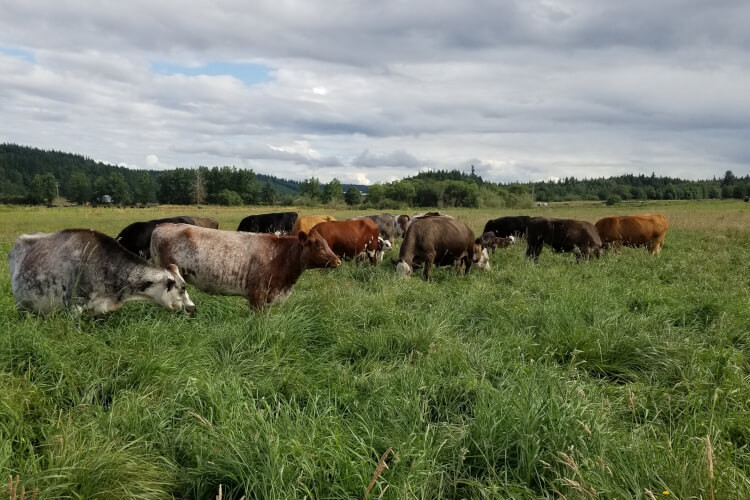How to roast bacon in the oven (Recipe)
posted on
October 18, 2022

This week in the One Straw Ranch kitchen we celebrated this unseasonably LOONNGGG sunny spell with Bacon Lettuce and Tomato sandwiches, and I’m sharing my bacon cooking method to make cooking and cleanup a breeze!
With local farms still bringing in fresh, vine ripe heirloom tomatoes to local markets and farm stands, it seems like a meal that really takes advantage of this unexpected abundance.
In addition to being seasonally appropriate, BLTs are quick to put together and pack a load of flavor with just a few simple ingredients.
However, cooking the bacon can be messy and time consuming.
Now, when I need a couple of strips of bacon to go with our morning eggs, pan frying is the method I usually choose.
However, when I need to cook enough bacon to make it the protein centerpiece of a family meal, it’s time to use this oven roasting method I’m sharing today!
Bonuses of using this oven roasting method:
- cook more bacon at one time, compared to in a frying pan
- reduce hands-on effort and concentration, leaving you free to put the rest of the meal together
- perfect bacon strips - evenly cooked and finished to your crispiness preference
- no bacon grease splattered on the stovetop
- pan cleanup is a breeze
So let’s get started with this simple bacon-cooking game changer.
Ingredients
One Straw Bacon – any quantity
Directions
Preheat oven to 350 deg.
Line a shallow rimmed baking sheet with parchment paper.
Lay strips of bacon out on the parchment paper lined pan. It’s OK if they touch because they’re going to shrink away from each other when they cook. If they stick together after cooking, they’re pretty easy to pull apart.
1 lb of One Straw bacon fits nicely on a 12" x 16" baking sheet, as pictured.

Bake in preheated oven for 20-30 minutes until desired doneness is reached. Start checking for doneness at 20 minutes (or at 15 minutes if you like your bacon very lightly cooked).
For regular eating bacon, I like mine a little less cooked, which will be somewhere in the 20-25 minute range. For more crispy bacon, like we prefer for BLTS, it’s going to be closer to 30 minutes.
Remove from oven when desired doneness is reached. Remove strips of bacon to a paper towel lined plate and serve immediately.

Cleanup: To save bacon drippings for future cooking purposes, allow them to cool down a bit in the pan, then carefully poor or ladle the oil into a glass jar or other lidded glass container. The fat is really hot when it comes out of the oven so if you don’t allow it to cool a bit it can crack your glass jar.
Now throw away the parchment paper and you pan is ready for a quick, easy wash!
Note about parchment paper: You don’t have to use parchment paper and can instead place the bacon directly on the pan. However, this is going to add considerably to your cleanup routine so I don’t recommend it.
Note about the bacon drippings: Don’t throw it away!!
Seriously. Animal fats are not a “waste” product.
They are a delicious, unprocessed, natural, nutritious food source!
The same fantastic flavor that you love in One Straw bacon is in the fat and can be used to impart its savory, rich flavor to so many dishes.
Our favorite uses for bacon drippings:
- sautéed vegetables
- eggs – fried or scrambled
- hashbrowns
- pan fried meats
- grilled sandwiches – mmmm, grilled cheese with a hint of bacon…
They all get kicked up a notch on the flavor chart by using bacon drippings as the cooking oil!




